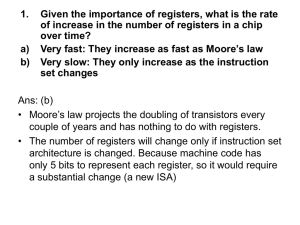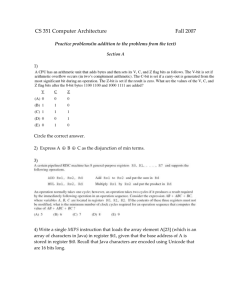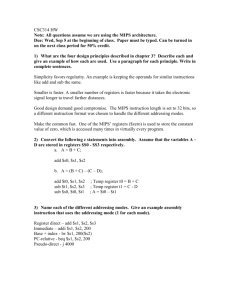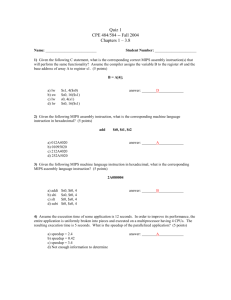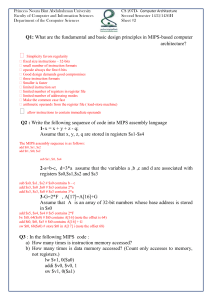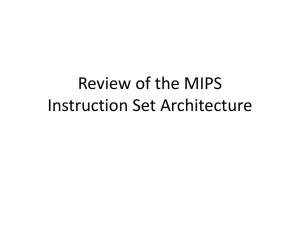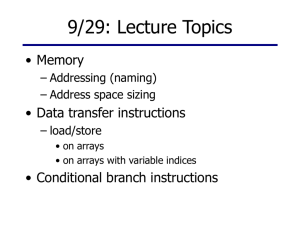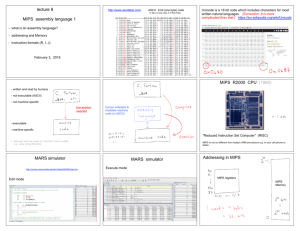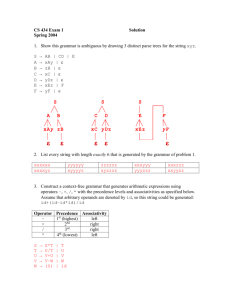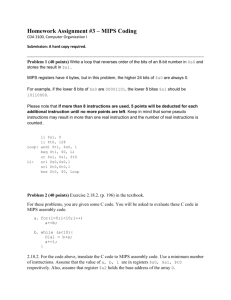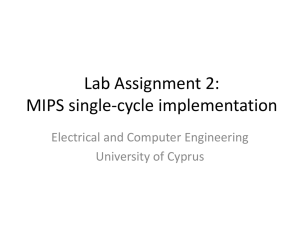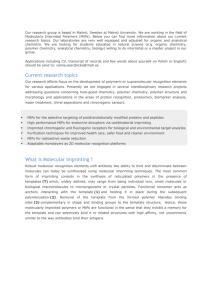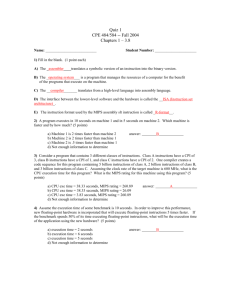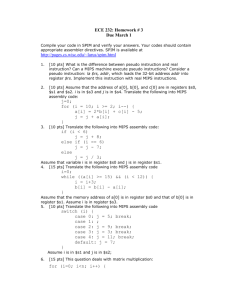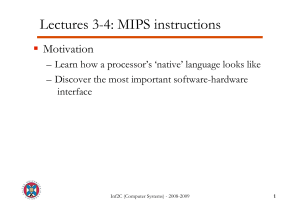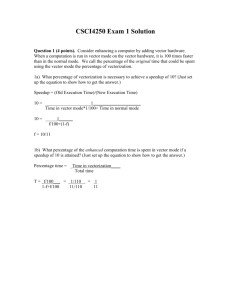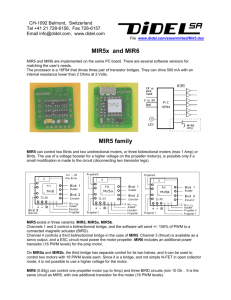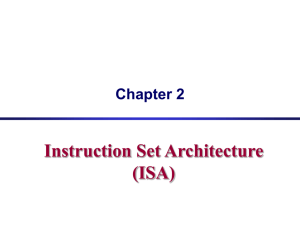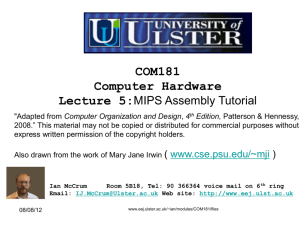assignment2
advertisement
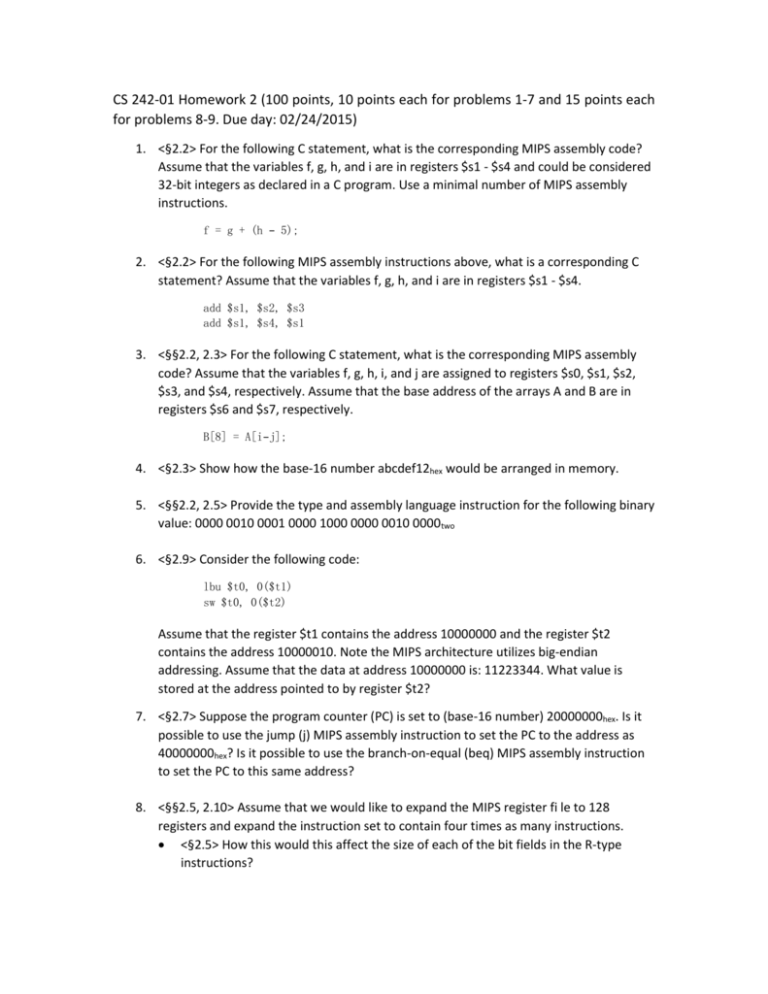
CS 242-01 Homework 2 (100 points, 10 points each for problems 1-7 and 15 points each
for problems 8-9. Due day: 02/24/2015)
1. <§2.2> For the following C statement, what is the corresponding MIPS assembly code?
Assume that the variables f, g, h, and i are in registers $s1 - $s4 and could be considered
32-bit integers as declared in a C program. Use a minimal number of MIPS assembly
instructions.
f = g + (h − 5);
2. <§2.2> For the following MIPS assembly instructions above, what is a corresponding C
statement? Assume that the variables f, g, h, and i are in registers $s1 - $s4.
add $s1, $s2, $s3
add $s1, $s4, $s1
3. <§§2.2, 2.3> For the following C statement, what is the corresponding MIPS assembly
code? Assume that the variables f, g, h, i, and j are assigned to registers $s0, $s1, $s2,
$s3, and $s4, respectively. Assume that the base address of the arrays A and B are in
registers $s6 and $s7, respectively.
B[8] = A[i−j];
4. <§2.3> Show how the base-16 number abcdef12hex would be arranged in memory.
5. <§§2.2, 2.5> Provide the type and assembly language instruction for the following binary
value: 0000 0010 0001 0000 1000 0000 0010 0000two
6. <§2.9> Consider the following code:
lbu $t0, 0($t1)
sw $t0, 0($t2)
Assume that the register $t1 contains the address 10000000 and the register $t2
contains the address 10000010. Note the MIPS architecture utilizes big-endian
addressing. Assume that the data at address 10000000 is: 11223344. What value is
stored at the address pointed to by register $t2?
7. <§2.7> Suppose the program counter (PC) is set to (base-16 number) 20000000hex. Is it
possible to use the jump (j) MIPS assembly instruction to set the PC to the address as
40000000hex? Is it possible to use the branch-on-equal (beq) MIPS assembly instruction
to set the PC to this same address?
8. <§§2.5, 2.10> Assume that we would like to expand the MIPS register fi le to 128
registers and expand the instruction set to contain four times as many instructions.
<§2.5> How this would this affect the size of each of the bit fields in the R-type
instructions?
<§2.5> How this would this affect the size of each of the bit fields in the I-type
instructions?
<§2.5> How could each of the two proposed changes decrease the size of an MIPS
assembly program? On the other hand, how could the proposed change increase
the size of an MIPS assembly program?
9. <§2.8> Implement the following C code in MIPS assembly. What is the total number of
MIPS instructions needed to execute the function? Assume n is in register $s0.
int f(int n){
if (n==0)
return 0;
else
return 1+f(n−1);
}
